#workforce and workflow management
Explore tagged Tumblr posts
Text
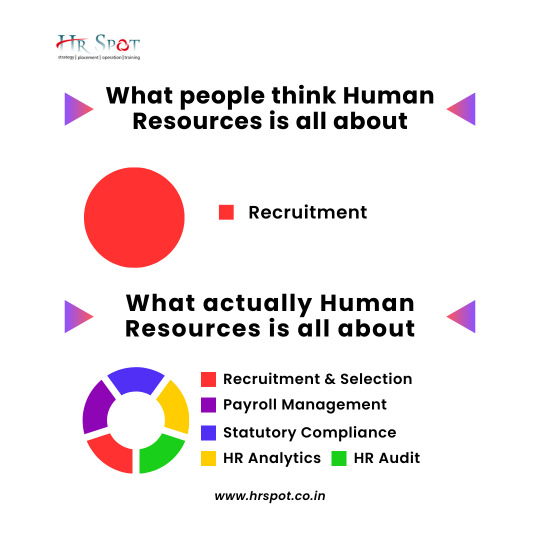
#onboarding#training#development#time and attendance management#administration of benefits and compensation#workforce and workflow management#performance evaluation and monitoring#payroll management#and layoffs.#HRSpot#humanresourcesmanagement#recruitment
0 notes
Text
Revolutionizing Field Operations with Field Service Management Apps by FieldEZ Technologies
In today’s fast-paced business landscape, managing field operations efficiently has become critical for success. Companies across various sectors — from utilities to telecom, retail, and after-sales service — rely on field personnel to complete tasks that directly impact customer satisfaction and profitability. To bridge the operational gap and streamline processes, FieldEZ Technologies offers powerful field service management apps that digitize and automate on-ground workflows.
What Are Field Service Management Apps?
Field service management apps are digital tools designed to help companies manage their mobile workforce, track tasks, assign jobs, and ensure timely service delivery. These apps provide real-time visibility into field operations, reducing manual errors, improving productivity, and enhancing customer service.
FieldEZ’s FSM apps go a step further by offering comprehensive platforms like ServiceEZ, SalesEZ, and RetailEZ, each tailored to specific needs within field-based teams.
Benefits of Using FieldEZ’s Field Service Management Software:
Workflow Automation — FieldEZ’s apps allow businesses to automate complex workflows — from job assignment to reporting — reducing paperwork and eliminating bottlenecks. With intuitive interfaces, managers can schedule tasks based on skillsets, availability, and location, ensuring optimal resource use.
Real-Time Tracking and Visibility — One of the core features of these field service management apps is real-time employee tracking. Managers can monitor the live location of field staff, understand task progress, and ensure SLAs are met — all from a single dashboard.
Seamless Communication — Efficient communication is key to successful field operations. FieldEZ software enables direct messaging and alerts between field agents and managers, reducing delays caused by unclear instructions or lack of updates.
Advanced Reporting and Analytics — With built-in reporting tools, FieldEZ’s field service management software empowers decision-makers with actionable insights. Analyze performance, service trends, and customer feedback to make data-driven decisions that boost efficiency.
FieldEZ Product Suite — Tailored for Every Field Function:
1. ServiceEZ — Designed specifically for after-sales service operations, ServiceEZ helps service-based companies handle installations, repairs, and maintenance with ease. The app allows quick job allocation, parts inventory tracking, and customer feedback collection.
2. SalesEZ — This tool supports on-field sales teams by simplifying lead tracking, appointment scheduling, and daily reporting. With SalesEZ, businesses can improve conversions and monitor salesforce performance in real time.
3. RetailEZ — Built for retail and merchandising operations, RetailEZ helps manage store visits, planograms, inventory audits, and shelf compliance. The app ensures retail execution is aligned with brand strategy and market goals.
Why Choose FieldEZ?
FieldEZ Technologies has empowered over 45,000 field users worldwide, making it a trusted partner for field operations automation. Their field service management software is scalable, secure, and customizable for businesses of all sizes. Whether you run a small service agency or a multinational enterprise, FieldEZ can tailor its solutions to meet your operational demands.
Additionally, FieldEZ’s mobile-first approach ensures that the apps are lightweight, user-friendly, and work across Android and iOS platforms — essential for on-the-go field teams.
Final Thoughts:
Investing in field service management apps like those offered by FieldEZ is no longer optional — it’s a necessity for businesses aiming to stay competitive and agile. With tools like ServiceEZ, SalesEZ, and RetailEZ, companies can achieve end-to-end workflow automation, drive efficiency, and deliver exceptional customer experiences.
FieldEZ Technologies stands at the forefront of this digital transformation, helping companies unlock the full potential of their field workforce.
#fieldez#field service#services#apps#management software#field management#field service software#field force management#field workforce management#workflow automation
0 notes
Text
#Workforce management#Workforce management software#Workforce management solutions#Field workforce management#Workforce scheduling software#Emergency response solutions#Utility emergency response software#Operational efficiency software#Workflow management software#Utilities Operations analytics#Operational analytics software
1 note
·
View note
Text
0 notes
Text

At Sierra Consulting, we understand that a CRM’s true potential lies in how effectively it’s used. That's why we deliver customized training programs to match your business needs, focusing on feature exploration, system navigation, and best practices for team collaboration. We aim to empower your team with the skills necessary for maximum CRM utilization
#it#it jobs#tech#technology#technews#current events#sierra consulting#crm benefits#crm#crm services#crm software#crm platform#crm strategy#customer retention#customer relationship management#collaboration#team player#workforce#workflow#sierra consulting inc
0 notes
Text
How You Can Transform Workflow management Tools
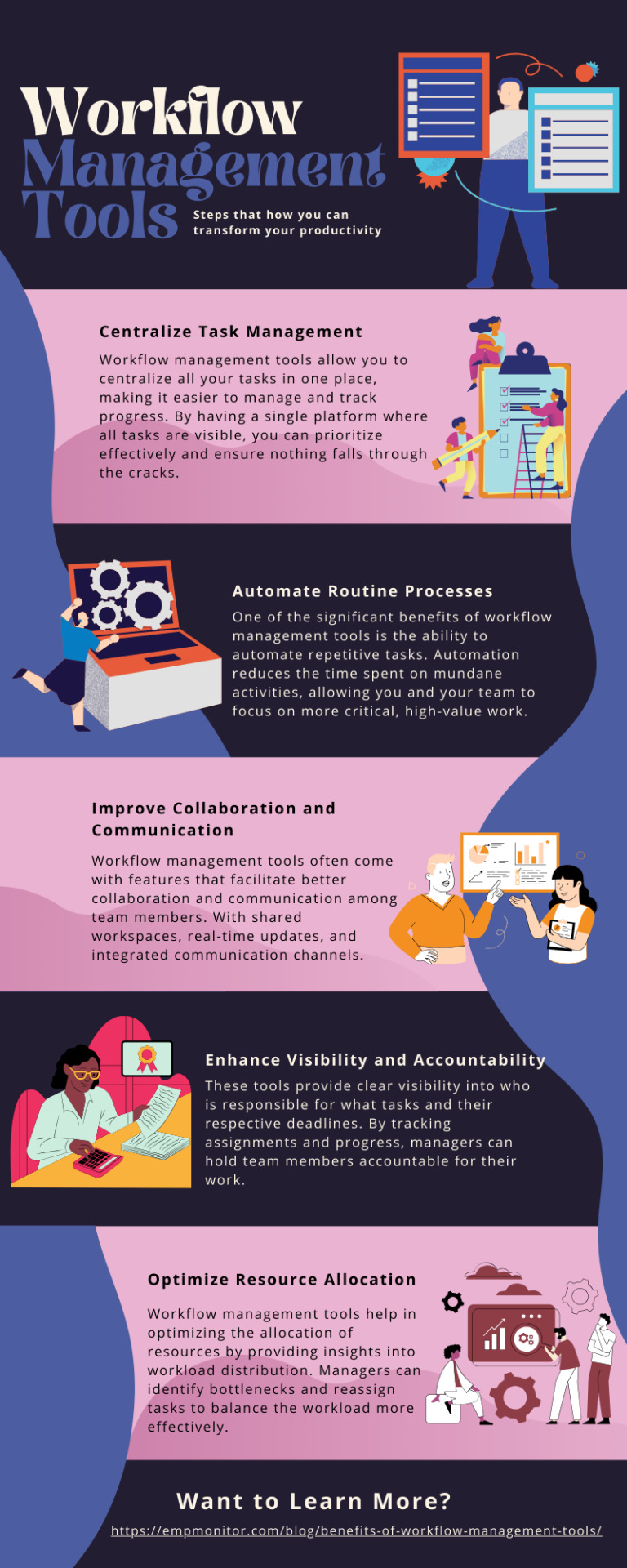
In this infographic, we will get to know about Workflow Management Tools. Workflow Management is also available in the IBM Engineering Lifecycle Management solution as part of a seamlessly integrated set of offerings…..
#workflow management tools#increase workflow efficiency#improve efficiency and productivity#workflow management system#workforce management software
0 notes
Text
Asana vs. ClickUp vs. Monday.com: Choosing the Right Project Management Tool
Project management is a critical aspect of any business or organization. To streamline tasks, collaborate effectively, and ensure projects stay on track, businesses often turn to project management software. Asana, ClickUp, and Monday.com are three popular options in the market, each with its own strengths and weaknesses. In this article, we will compare these three tools based on various criteria to help you make an informed decision.
Overview:
G2 Rating is a reliable metric to gauge user satisfaction and performance. In terms of star ratings, Monday.com takes a slight lead with 4.7, followed closely by Asana and ClickUp with 4.3 and 4.7, respectively.
Market Segment tells you where these tools are most commonly used. ClickUp is preferred in the small-business segment (79.8% of reviews), followed by Monday.com (65.4%) and Asana (55.1%). Monday.com also has a strong presence in the mid-market (42.8%).
Entry Level Price varies significantly, with Asana offering a free plan, ClickUp at $0 per member per month, and Monday.com starting at $8.00 per user per month.
Total Number of Reviews indicates the overall popularity and user base. Monday.com leads with a substantial 14,775 reviews, while Asana and ClickUp follow with 9,346 and 8,889 reviews, respectively.
General Ratings:
Meets Requirements: Monday.com leads with a rating of 9.1, closely followed by ClickUp at 9.0. Asana and ClickUp also perform well, with 8.7 and 9.1 ratings, respectively.
Ease of Use: Monday.com has the highest ease of use rating at 9.0, while Asana and ClickUp both score 8.6. These scores suggest that all three platforms are relatively user-friendly.
Ease of Setup: ClickUp stands out with a rating of 8.8, while Asana and Monday.com both score 8.7 and 8.2, respectively.
Ease of Admin: Monday.com takes the lead with a rating of 9.1, while Asana, ClickUp, and ClickUp follow closely with scores ranging from 8.6 to 9.1.
Quality of Support: Monday.com has the highest support rating at 9.0, followed by ClickUp and Asana at 8.9 and 8.4, respectively.
Business Partnership: Monday.com excels with a 9.2 rating, while Asana, ClickUp, and ClickUp trail with ratings between 8.7 and 9.2.
Product Direction: ClickUp leads with 9.5, closely followed by Monday.com at 9.4. Asana and ClickUp also score well, with ratings ranging from 8.4 to 9.4.
Tasks:
Creation & Assignment: All three tools excel in this category, with ratings above 8.7.
Due Dates: Again, all three tools perform well, with ratings above 9.0.
Task Prioritization: ClickUp leads with a rating of 9.3, while Asana and Monday.com score between 8.7 and 9.3.
To-Do Lists: All three platforms score well, with ratings above 8.7.
Dependencies: All three tools offer decent dependency management, with ratings around 8.6.
Mass Updates: ClickUp and Monday.com lead in this category, with scores above 8.6, while Asana lags behind with a rating of 8.3.
Drag & Drop: ClickUp and Monday.com are preferred for their drag and drop functionality, scoring above 8.9, while Asana scores 8.5.
Recurring Tasks: ClickUp and Asana excel in this category, scoring above 8.8, while Monday.com lags slightly with a rating of 8.5.
Setup:
Activities and Flows: Monday.com stands out in activities and flows with a rating of 9.1, while ClickUp and Asana score between 8.5 and 9.1.
Dependencies and Notifications: Monday.com leads with 9.0, while Asana and ClickUp score between 8.5 and 9.0.
Task Creation:
Creation & Assignment and Due Dates: All three tools score above 9.0 in these aspects.
Drag & Drop and Mass Updates: ClickUp leads in drag & drop and mass updates, scoring above 9.0, while Asana and Monday.com score slightly lower.
Automation:
Workflows and Customization: Monday.com and ClickUp lead in these categories, with ratings above 8.8, while Asana lags slightly.
Data Repository: All three platforms offer decent data repository functionality, with ratings around 8.4 to 8.8.
Communication:
Chat and Discussions: All three tools perform well, with ratings above 7.5.
External, Feedback, and Announcements: Monday.com and ClickUp lead in external communication, while Asana lags behind. In feedback and announcements, all three tools score well.
Projects:
Planning and Project Map: Monday.com leads with ratings of 9.3 and 9.0, while ClickUp and Asana score between 8.6 and 9.3.
GANTT and Calendar View: Monday.com and Asana lead in these categories, while ClickUp lags slightly.
Project Budgeting: All three tools offer decent project budgeting features, with ratings around 8.0 to 8.7.
Issue Tracking: All three platforms perform well in issue tracking.
Templates and Critical Path: Monday.com and ClickUp excel in templates, while Asana lags slightly. In the critical path category, all three tools offer decent functionality.
Time & Expense: Monday.com and ClickUp lead in time and expense management, while Asana scores slightly lower.
Methodologies: ClickUp leads in methodologies, while Monday.com and Asana score slightly lower.
Management:
Updates and Audit Trail: Monday.com leads in updates and audit trails, while Asana and ClickUp score slightly lower.
Integration: Monday.com and ClickUp excel in integration capabilities, while Asana lags slightly.
Task Management:
Task Prioritization and To-Do Lists: All three tools excel in these aspects.
Dependencies and Recurring Tasks: ClickUp and Monday.com lead in dependency management, while Asana scores slightly lower.
Administration:
Permissions and Procedures: All three tools offer strong administration features.
Remote Work: ClickUp excels in remote work capabilities, while Monday.com and Asana score slightly lower.
Content & Documents:
File Sharing and Notes: All three platforms offer strong document management and collaboration features.
Search and Versioning: Monday.com and ClickUp lead in search and versioning capabilities, while Asana lags slightly.
Resource Management:
Resource Definition and Capacity: Monday.com
Resource Scheduling: All three tools offer solid resource scheduling features, with ratings above 8.6.
Project Management:
Task Prioritization and Planning: All three platforms excel in these aspects.
Views and Scheduling: Monday.com and ClickUp lead in views and scheduling, while Asana scores slightly lower.
Critical Path and Dashboards: Monday.com leads in critical path and dashboards, while Asana and ClickUp score slightly lower.
Controls:
Custom Views and User Management: All three tools offer strong control features.
Calendars and Public Sharing: Monday.com excels in calendars, while Asana and ClickUp score slightly lower. In public sharing, all three tools offer decent functionality.
Generative AI:
Text Generation and Text Summarization: All three platforms offer generative AI capabilities, with Monday.com leading in text generation.
Project Monitoring:
Baselining / KPIs and Resource Allocation: All three tools perform well in project monitoring, with Monday.com and ClickUp leading in KPIs and resource allocation.
Workload: ClickUp excels in workload management, while Asana and Monday.com score slightly lower.
Workspace:
Configuration and Insights: All three platforms offer strong workspace management features.
Project Management:
Task Management: All three tools excel in task management, with ClickUp taking a slight lead.
Planning, Visibility, and Integration: All three platforms offer robust project management capabilities, with Monday.com leading in visibility and ClickUp excelling in integration.
Communication & Collaboration:
Communication Channels: All three platforms provide strong communication channel options.
Document Management: Monday.com and ClickUp lead in document management, while Asana scores slightly lower.
Collaboration: All three tools excel in collaboration features.
Remote Collaboration:
Alignment and Accountability: All three platforms offer strong remote collaboration features.
Connectivity and Offline Mode: Monday.com leads in connectivity, while Asana and ClickUp score slightly lower. In offline mode, all three tools offer decent functionality.
Cost Management:
Project Budgeting and Time & Expense: All three platforms offer decent cost management capabilities, with Monday.com and ClickUp leading in project budgeting and time & expense management.
Profitability: All three platforms provide robust profitability tracking features.
Integration:
Front Office and Back Office: All three tools offer strong integration options.
External Data: All three platforms offer good external data integration capabilities.
In conclusion, Asana, ClickUp, and Monday.com are all strong contenders in the project management software market. The choice between them largely depends on your specific business needs, preferences, and budget. ClickUp is ideal for small businesses and offers extensive customization options. Monday.com stands out in terms of user satisfaction, making it a reliable choice for small and mid-market businesses. Asana, on the other hand, offers a free plan and is a well-rounded choice with a focus on task management and collaboration. Consider your unique requirements and user preferences to make an informed decision for your project management needs.
#work management software#work order management software#remote work management software#workload management software#workstation management software#work order management software free#list of workforce management software#workforce management software companies#workforce management software examples#top work management software#workplace management software#do software engineers work remotely#best work order management software#workflow management software for small business#which project management software is best#how does project management software work#what is workforce management software#what is practice management software#did software#when to work software#hardware and software management#what is work management software#hardware and software solutions#is waste management a good company to work for#can software engineers work remotely#did management software#document workflow management software#how does inventory management software work#how does fleet management software work#hardware and software work together
0 notes
Text
Elon Musk’s so-called Department of Government Efficiency put a $1 spending limit on most credit cards belonging to employees and contractors of the General Services Administration—a critical agency that manages IT and office buildings for the US government—along with at least three other federal agencies. Similar restrictions are expected to roll out to the entire government workforce soon, according to several sources familiar with the matter.
“Effective immediately, all GSA SmartPay Travel and Purchase Cards issued to GSA employees and contractors are being paused and will not be available for use except in very limited circumstances,” GSA wrote in a memo to staff Thursday morning viewed by WIRED. The memo later stated that for “up to 0.1% of the GSA workforce, requests may be made for certain individual purchase charge card spend thresholds be set above $1. Please provide the rationale for all such deviations on an employee-by-employee basis along with the proposed increased threshold.”
The GSA, one of the first agencies that Musk allies infiltrated after DOGE was established, manages the SmartPay program for more than 250 federal agencies and organizations. The SmartPay website claims it is “the world’s largest government charge card and commercial payment solutions program.”
The spending freeze comes after DOGE posted on X earlier this week that it was working to “simplify” the government credit card program and “reduce costs.”
The restrictions immediately apply to GSA, the Office of Personnel Management, the Consumer Finance Protection Bureau, and the United States Agency for International Development, according to a source with direct knowledge of the project. All four of the agencies have been prominent targets of DOGE in recent weeks. Employees who spoke with WIRED say the changes will result in enormous complications to their existing workflows and that excessive or fraudulent spending is rare. Those who’ve already received approval for travel expenses (and may currently be traveling) have to request a temporary spending limit increase, the sources say.
One important reason that federal employees typically put expenses on special government-issued credit cards is to ensure they avoid paying state sales tax on things like hotels and rental cars, which federal agencies are supposed to be exempt from. The GSA’s website states that the state sales tax exemption is “determined by method of payment,” not by the employee’s ability to prove they work for the federal government.
Got a Tip?Are you a current or former government employee who wants to talk about what's happening? We'd like to hear from you. Using a nonwork phone or computer, contact the reporter securely on Signal at zoeschiffer.87.
As DOGE attempts to cut billions of dollars from the federal budget, Elon Musk has been posting examples of alleged “fraud” his team has uncovered to his over 218 million followers on X. In some cases, reporting from WIRED and other outlets suggests DOGE may be misinterpreting or misrepresenting what they’ve found.
For example, Musk has falsely claimed that 150-year-olds were receiving Social Security benefits. Experts told WIRED that DOGE likely overlooked a quirk in the payments system that doles out these benefits, which automatically sets a person’s birthday to May 20, 1875 if the real date is unknown, making these individuals appear to be 150 in the system.
The new spending restrictions apply to both SmartPay travel and purchase cards. Travel cards are widely used across the government (for example, most army reservists have these cards). The government tracks travel expenses, like hotel and airline fees, through software tools like Concur. The GSA already requires receipts for any purchase that its employees make over $75. “The system is a pain in the ass and requires authorization from a supervisor before any money can be spent,” says a current GSA employee.
Once a trip is done, employees have to submit a voucher that matches the approved expenses. Expenses are scrupulously tracked—employees are told to minimize ATM withdrawals to avoid unnecessary fees, according to a current GSA employee, who like the others in this story, spoke to WIRED on the condition of anonymity because they were not authorized to speak publicly. They say misusing a card is already grounds for disciplinary action, including termination.
Purchase cards are more rare and are used for work expenses under $10,000; anything above this amount requires a formal government contract. They’re used for office supplies, IT equipment, and trainings, among other things. If employees want to spend money on a purchase card, they have to submit a form, which then needs to be approved and signed by a supervisor. When that’s done, the form is submitted for approval to the approving office, with the name of the person who wants to make the purchase, a description of the item, the estimated price, an accounting code, and the date when the goods or services are needed.
Once the payment is approved, it’s assigned a purchase request number. Only then can the employee actually spend money. If they spend 10 percent more than the approved amount, they need written approval again. At the GSA, each purchase is tracked through a program called Pegasys, which requires a separate form to access. Pegasys has two sides: The purchase side, which shows the money that was spent, and the reconciliation side. The card holder has to match these two sides, cent for cent, using the request number.
“To commit fraud, you’d have to have the employee, supervisor, and likely someone in finance in on it,” says another current GSA employee. “It’s not as easy as [DOGE is] claiming.”
7 notes
·
View notes
Text
From Burnout to Balance: Is Project Resource Planning the Ultimate Solution?

Burnout is no longer a silent intruder in the workplace, it’s a widespread disruption, silently eroding productivity, morale, and innovation. With increasing pressure to meet deadlines, deliver quality outcomes, and align with dynamic goals, teams often find themselves trapped in chaotic workflows. The divide between what is expected and what is delivered continues to grow. This is where a shift towards project resource planning has emerged as a beacon of stability.
A structured approach to resource distribution isn’t merely about scheduling—it’s about restoring order, clarity, and purpose. It offers a comprehensive overview of skills, schedules, and assigned roles. When implemented effectively, it transforms a fractured process into a seamless operation.
The Root Cause of Burnout Lies in Poor Planning
Workforce exhaustion often results from uneven workloads, poorly defined roles, and misaligned priorities. Without visibility into task ownership and team capacity, employees juggle conflicting objectives, causing fatigue and disengagement. Leadership, in such scenarios, often reacts to symptoms rather than solving the underlying problem.

A well-devised planning system allows businesses to align their human capital with real-time project needs. It enables early detection of overload, bottlenecks, and inefficiencies. More importantly, it allows for a preventive, not reactive, managerial style.
Clarity Creates Confidence
When people know what they’re doing, why they’re doing it, and how their contributions affect the bigger picture, confidence and accountability naturally increase. Task transparency reduces confusion and eliminates duplicate efforts. A clearly mapped schedule lets employees manage time more effectively, promoting both efficiency and mental well-being.
Resource forecasting through intelligent tools supports realistic deadlines and reduces rushed outputs. Balanced task assignment nurtures sustained momentum and steady performance without burnout. This clarity becomes the silent catalyst behind exceptional team dynamics.
Enhancing Performance with Technology
Technology enables precision. Gone are the days when Excel sheets dictated workforce allocation. Today’s systems offer intelligent dashboards, behaviour analytics, and workload forecasting—all in real-time. Modern tools serve as operational command centers where strategy, execution, and evaluation coexist seamlessly.
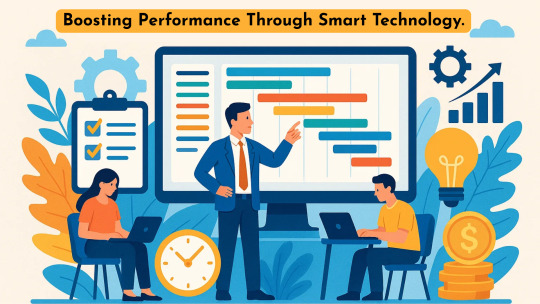
Key Platforms That Reinforce This Shift
EmpMonitor stands out as a workforce intelligence platform that provides real-time employee tracking, productivity breakdowns, and application usage analytics. Its strength lies in mapping behavioural patterns alongside performance. Automated timesheets and screen activity logs, ensure that resource management decisions are data-driven and transparent. EmpMonitor excels in both in-office and remote team settings, offering flexible yet detailed oversight.
Hubstaff contributes to this ecosystem with its GPS-enabled framework, making it well-suited for mobile teams and field-based activities. It tracks time, location, and task completion metrics, allowing for accurate billing and service delivery analysis.
Desk Time focuses on simplicity and intuitive design. It’s suitable for creative and agile teams that prioritize clean time-logging and visual timeline management.
Together, these platforms showcase how digital tools revolutionize resource planning with actionable intelligence and minimal manual effort.
Turning Data into Action
One of the most profound benefits of structured resource planning lies in turning raw data into strategy. By monitoring time investment, engagement trends, and workflow pacing, leaders can adapt schedules, reallocate resources, or restructure priorities before productivity drops.
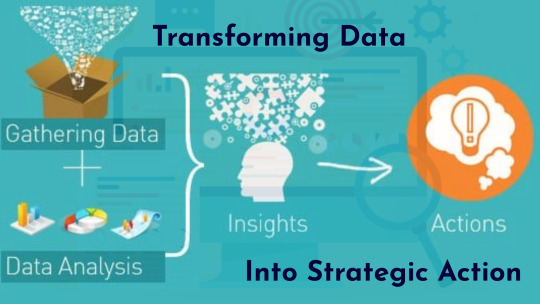
More than numbers, it’s about understanding human bandwidth. This employee wellbeing strategy leads to smarter delegation, increased autonomy, and performance-based adjustments—all essential for a healthy work environment.
Building a Culture of Preparedness
Effective planning isn’t just operational—it’s cultural. It breeds discipline, encourages ownership, and ensures employees are equipped to deliver without overstretching. With real-time insights, feedback becomes continuous rather than occasional. It also supports upskilling opportunities by revealing gaps where intervention is required.
By embedding structure into everyday functions, teams become more responsive and less reactive. The culture shifts from chaotic urgency to composed delivery.
You can also watch : How to Use Live Screen Monitoring in EmpMonitor | Step-by-Step Guide
youtube
Conclusion: The Balance Blueprint
Balance in today’s professional landscape stems not from lowered aspirations, but from strategic and refined execution. Organizations that synchronize effort with available capacity tend to achieve higher productivity and demonstrate greater resilience. With the right structural approach, maintaining equilibrium becomes both attainable and enduring.
The integration of project resource planning allows for thoughtful decision-making that respects both business goals and human limits. It’s not merely a managerial practice—it’s the framework for organizational health. For teams fatigued by inconsistency and overwhelmed by misalignment, this approach marks the transition from burnout to balance.
In a fast-paced world, the organizations that thrive will not be those that push harder, but those that plan smarter—with clarity, control, and compassion.
#resource planning#project planning#project resource management#project resource planner#project resourcing#Youtube
2 notes
·
View notes
Text
Microsoft Copilot AI is The Reason Behind 6,000 Layoffs
Microsoft Copilot AI, the technology firm's AI productivity tool, is causing ripples—not merely in the sphere of innovation, but in transforming work culture as well. Rumors indicate that Microsoft's move towards AI-assisted automation, particularly through offerings such as Copilot for Microsoft 365 and GitHub, has resulted in the laying off of 6,000 workers worldwide.
Why the Layoffs
With machine learning absorbing mundane and time-consuming work like code generation, summarization of email, meeting minutes, and data analysis, most jobs in the traditional sense are redundant. The firm is now shifting effort into creating AI-based, cloud computing, and optimizing automation.
Key Highlights:
6,000+ redundancies in technology, support, and operations personnel.
Copilot AI technology is replacing human workflows in coding and collaboration in real-time.
Microsoft is investing billions in OpenAI collaborations and cloud-based AI.
The firm will recruit strongly for cloud security, AI engineering, and AI research.
What This Means:
While Microsoft Copilot AI is a productivity booster, it is also transforming the character of work. Companies are scaling AI, and the world is redefining its workforce. Professionals are re-skilling in AI tools, data literacy, and automation management to remain in the game.
2 notes
·
View notes
Text
Integrating Skill Assessments into Your Existing HR Systems

Introduction
As organizations strive to build a skilled and efficient workforce, integrating skill assessments into existing HR systems has become a crucial strategy. By embedding skill evaluations within HR workflows, companies can enhance hiring accuracy, streamline employee development, and make data-driven workforce decisions. This blog explores the benefits, challenges, and best practices of integrating skill assessments into HR systems, with insights on how platforms like Gappeo can facilitate the process.
Why Integrate Skill Assessments into HR Systems?
Integrating skill assessments within HR platforms offers numerous advantages, including:
Improved Hiring Accuracy: Objective skill evaluations help recruiters identify the most suitable candidates, reducing reliance on resumes alone.
Efficient Onboarding: Pre-assessed skills enable HR teams to tailor onboarding programs, ensuring new hires receive targeted training.
Employee Development & Training: Ongoing skill assessments allow HR teams to track employee growth and implement personalized training programs.
Workforce Planning: Insights from assessments help HR leaders identify skill gaps and plan for future workforce needs.
Key Considerations for Integration
Before incorporating skill assessments into your HR system, consider the following:
Compatibility: Ensure the assessment platform integrates seamlessly with your existing HR software (e.g., ATS, LMS, or HRIS).
Customization: Choose a system that allows tailored assessments aligned with job roles and industry needs.
Scalability: The platform should support growing workforce demands and adapt to evolving skill requirements.
User Experience: Both recruiters and candidates should find the system easy to navigate and engage with.
How Gappeo Simplifies Skill Assessment Integration
Gappeo, a leading talent and skill assessment platform, offers seamless integration with various HR systems. Key features include:
Pre-Built API Integrations: Easily connect with popular HR platforms.
Customizable Assessment Modules: Design skill tests specific to job roles.
Audio and Video Assessments: Enhance evaluation accuracy by analyzing verbal and non-verbal cues.
Comprehensive Reporting: Generate insights to support hiring and workforce development decisions.
Steps to Successfully Integrate Skill Assessments
Evaluate Your HR System: Assess your current HR software capabilities and identify integration points.
Select the Right Assessment Platform: Choose a solution like Gappeo that aligns with your HR objectives.
Customize Assessments: Develop skill tests that reflect the competencies required for different roles.
Pilot Test the Integration: Run a small-scale implementation to ensure seamless functionality.
Train HR Teams: Educate HR personnel on using the integrated system effectively.
Monitor and Optimize: Continuously track performance metrics and refine assessment processes.
Conclusion
Integrating skill assessments into HR systems is a game-changer for talent management, enabling data-backed hiring, employee development, and strategic workforce planning. With solutions like Gappeo, organizations can streamline skill evaluations while ensuring a seamless experience for both HR professionals and candidates.
Ready to enhance your HR processes? Discover how Gappeo can help you integrate skill assessments effortlessly!
#assessment#hiring#recruitment#saas development company#saas platform#hr#hrsystems#hrprocesses#evaluation
3 notes
·
View notes
Text
Revolutionizing Field Operations with FieldEZ’s Field Service Management Software
In today’s fast-paced business environment, organizations across industries rely heavily on efficient field operations to deliver exceptional customer service and streamline internal processes. FieldEZ Technologies stands at the forefront of this transformation with its cutting-edge field service management software. By offering powerful, scalable solutions like ServiceEZ, SalesEZ, and RetailEZ, FieldEZ empowers companies to optimize their service delivery, increase workforce productivity, and gain real-time visibility into field operations.
What is Field Service Management Software?
Field service management software (FSM) is a digital solution that helps businesses manage their field operations efficiently. From scheduling and dispatching to tracking, invoicing, and reporting, FSM software automates tasks that were once manual and error-prone. It is especially valuable for industries like telecom, healthcare, energy, home services, and manufacturing, where timely service delivery is essential.
FieldEZ’s FSM software goes beyond basic automation — it integrates advanced features such as GPS-based tracking, dynamic scheduling, digital forms, and real-time analytics, ensuring field technicians are always connected and informed.
Why Choose FieldEZ?
FieldEZ Technologies has developed a comprehensive ecosystem tailored for businesses with mobile workforces. Their product suite — ServiceEZ, SalesEZ, and RetailEZ — caters to various operational needs:
ServiceEZ focuses on maintenance and repair services, making it ideal for organizations looking to implement advanced maintenance management systems.
SalesEZ boosts sales performance by streamlining lead tracking, customer interactions, and reporting.
RetailEZ helps manage retail execution and merchandising activities with precision and ease.
Together, these tools enhance the capabilities of on-ground teams and bring operational transparency to management.
Key Features of FieldEZ’s Service Management Software:
FieldEZ’s service management software is built with user-friendliness and customization in mind. Here are some of the key features:
Smart Scheduling & Dispatch: Assign the right technician to the right job at the right time, reducing delays and boosting customer satisfaction.
Mobile Workforce Management: Real-time visibility into field employee location, job status, and task completion via a user-friendly mobile app.
Work Order Management: Create, assign, track, and close work orders seamlessly, ensuring nothing falls through the cracks.
Inventory & Asset Management: Monitor tools and equipment efficiently, reducing downtime due to unavailability of resources.
Customer Communication Tools: Send automated updates, reminders, and post-service feedback requests directly to customers.
Reports & Dashboards: Gain deep insights into workforce productivity, service quality, and operational efficiency.
Benefits for Businesses:
Implementing a field service management software like FieldEZ’s provides measurable advantages:
Improved Operational Efficiency: Automating workflows and reducing paperwork saves time and resources.
Higher First-Time Fix Rates: With proper scheduling and information access, technicians complete jobs faster and more accurately.
Enhanced Customer Satisfaction: Prompt services, real-time updates, and follow-ups keep customers happy and engaged.
Data-Driven Decisions: Managers can analyze field performance trends and optimize strategies accordingly.
Compliance & Safety: Digital documentation ensures adherence to service protocols and safety regulations.
Scalable Across Industries:
Whether you’re running a small service company or managing a large enterprise, FieldEZ’s solutions are scalable to your needs. Their maintenance management systems and service solutions are designed to adapt across industries like telecom, healthcare, consumer goods, and utilities.
Final Thoughts:
FieldEZ Technologies has redefined how companies manage their mobile workforce. With its intuitive and powerful field service management software, businesses can automate operations, improve service delivery, and stay ahead in an increasingly competitive market. Solutions like ServiceEZ, SalesEZ, and RetailEZ make FieldEZ a reliable partner for organizations aiming for digital transformation in field operations.
#fieldez#field service#services#apps#management software#field management#field service software#field force management#field workforce management#workflow automation
0 notes
Text
Predicting Employee Attrition: Leveraging AI for Workforce Stability

Employee turnover has become a pressing concern for organizations worldwide. The cost of losing valuable talent extends beyond recruitment expenses—it affects team morale, disrupts workflows, and can tarnish a company's reputation. In this dynamic landscape, Artificial Intelligence (AI) emerges as a transformative tool, offering predictive insights that enable proactive retention strategies. By harnessing AI, businesses can anticipate attrition risks and implement measures to foster a stable and engaged workforce.
Understanding Employee Attrition
Employee attrition refers to the gradual loss of employees over time, whether through resignations, retirements, or other forms of departure. While some level of turnover is natural, high attrition rates can signal underlying issues within an organization. Common causes include lack of career advancement opportunities, inadequate compensation, poor management, and cultural misalignment. The repercussions are significant—ranging from increased recruitment costs to diminished employee morale and productivity.
The Role of AI in Predicting Attrition
AI revolutionizes the way organizations approach employee retention. Traditional methods often rely on reactive measures, addressing turnover after it occurs. In contrast, AI enables a proactive stance by analyzing vast datasets to identify patterns and predict potential departures. Machine learning algorithms can assess factors such as job satisfaction, performance metrics, and engagement levels to forecast attrition risks. This predictive capability empowers HR professionals to intervene early, tailoring strategies to retain at-risk employees.
Data Collection and Integration
The efficacy of AI in predicting attrition hinges on the quality and comprehensiveness of data. Key data sources include:
Employee Demographics: Age, tenure, education, and role.
Performance Metrics: Appraisals, productivity levels, and goal attainment.
Engagement Surveys: Feedback on job satisfaction and organizational culture.
Compensation Details: Salary, bonuses, and benefits.
Exit Interviews: Insights into reasons for departure.
Integrating data from disparate systems poses challenges, necessitating robust data management practices. Ensuring data accuracy, consistency, and privacy is paramount to building reliable predictive models.
Machine Learning Models for Attrition Prediction
Several machine learning algorithms have proven effective in forecasting employee turnover:
Random Forest: This ensemble learning method constructs multiple decision trees to improve predictive accuracy and control overfitting.
Neural Networks: Mimicking the human brain's structure, neural networks can model complex relationships between variables, capturing subtle patterns in employee behavior.
Logistic Regression: A statistical model that estimates the probability of a binary outcome, such as staying or leaving.
For instance, IBM's Predictive Attrition Program utilizes AI to analyze employee data, achieving a reported accuracy of 95% in identifying individuals at risk of leaving. This enables targeted interventions, such as personalized career development plans, to enhance retention.
Sentiment Analysis and Employee Feedback
Understanding employee sentiment is crucial for retention. AI-powered sentiment analysis leverages Natural Language Processing (NLP) to interpret unstructured data from sources like emails, surveys, and social media. By detecting emotions and opinions, organizations can gauge employee morale and identify areas of concern. Real-time sentiment monitoring allows for swift responses to emerging issues, fostering a responsive and supportive work environment.
Personalized Retention Strategies
AI facilitates the development of tailored retention strategies by analyzing individual employee data. For example, if an employee exhibits signs of disengagement, AI can recommend specific interventions—such as mentorship programs, skill development opportunities, or workload adjustments. Personalization ensures that retention efforts resonate with employees' unique needs and aspirations, enhancing their effectiveness.
Enhancing Employee Engagement Through AI
Beyond predicting attrition, AI contributes to employee engagement by:
Recognition Systems: Automating the acknowledgment of achievements to boost morale.
Career Pathing: Suggesting personalized growth trajectories aligned with employees' skills and goals.
Feedback Mechanisms: Providing platforms for continuous feedback, fostering a culture of open communication.
These AI-driven initiatives create a more engaging and fulfilling work environment, reducing the likelihood of turnover.
Ethical Considerations in AI Implementation
While AI offers substantial benefits, ethical considerations must guide its implementation:
Data Privacy: Organizations must safeguard employee data, ensuring compliance with privacy regulations.
Bias Mitigation: AI models should be regularly audited to prevent and correct biases that may arise from historical data.
Transparency: Clear communication about how AI is used in HR processes builds trust among employees.
Addressing these ethical aspects is essential to responsibly leveraging AI in workforce management.
Future Trends in AI and Employee Retention
The integration of AI in HR is poised to evolve further, with emerging trends including:
Predictive Career Development: AI will increasingly assist in mapping out employees' career paths, aligning organizational needs with individual aspirations.
Real-Time Engagement Analytics: Continuous monitoring of engagement levels will enable immediate interventions.
AI-Driven Organizational Culture Analysis: Understanding and shaping company culture through AI insights will become more prevalent.
These advancements will further empower organizations to maintain a stable and motivated workforce.
Conclusion
AI stands as a powerful ally in the quest for workforce stability. By predicting attrition risks and informing personalized retention strategies, AI enables organizations to proactively address turnover challenges. Embracing AI-driven approaches not only enhances employee satisfaction but also fortifies the organization's overall performance and resilience.
Frequently Asked Questions (FAQs)
How accurate are AI models in predicting employee attrition?
AI models, when trained on comprehensive and high-quality data, can achieve high accuracy levels. For instance, IBM's Predictive Attrition Program reports a 95% accuracy rate in identifying at-risk employees.
What types of data are most useful for AI-driven attrition prediction?
Valuable data includes employee demographics, performance metrics, engagement survey results, compensation details, and feedback from exit interviews.
Can small businesses benefit from AI in HR?
Absolutely. While implementation may vary in scale, small businesses can leverage AI tools to gain insights into employee satisfaction and predict potential turnover, enabling timely interventions.
How does AI help in creating personalized retention strategies?
AI analyzes individual employee data to identify specific needs and preferences, allowing HR to tailor interventions such as customized career development plans or targeted engagement initiatives.
What are the ethical considerations when using AI in HR?
Key considerations include ensuring data privacy, mitigating biases in AI models, and maintaining transparency with employees about how their data is used.
For more Info Visit :- Stentor.ai
2 notes
·
View notes
Text
How Do I Choose Best expense management software for small business ?
Every small business has its inspiring challenges, but perhaps most challenging is the management of expenses. It means every rupee counts, and every penny that is withheld is between profit and loss. All these reasons make an appropriate decision in choosing the best expense management software for small business not just an idea-good but critical.
Again, there are too many tools available, so how does one know the right one for him or her? This article will chop through all such questions into components required to check out, comparing options with other people, and why the right software may change the management of your business.
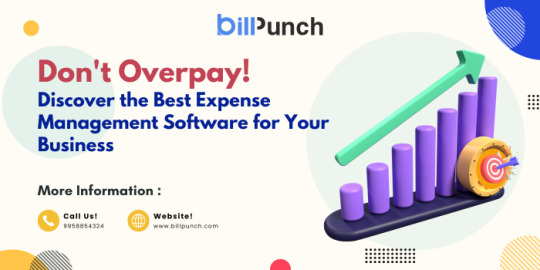
Why Do You Need Expense Management Software ?
If your business is growing, so is the complexity related to your receipts, travel expenses, reimbursements, and even the company spending by the team. It's tedious to manually enclose this information into spreadsheets; in addition, the process is quite error-prone and delays occur.
That's where the best expense management software for small businesses comes in. It automates, keeps your finances sorted, and gives you a real-time view of where the money is going. Whether it is day-by-day purchases or your monthly bills or even employee reimbursements, a good tool can turn things around all the way.
Essential Features You Should Look For in Best Expense Management Software that Suits Small Businesses
1. Usability
You need software that is intuitive and user-friendly. It should also be feature-rich and seamless when it comes to onboarding. Often, small businesses do not have dedicated IT teams, qualified individuals or resources to be able to deploy specialized software easily by an expert.
2. Automated and Integrated
The best software in this regard should also go further by automating all areas related to income and expenses, including the accounting tools involved, banks, and by supplementing with HR platforms. Applicants should take onboard, for example, automated expense capture as a recurrence and categorization.
3. Customizable Reporting
Good detailed reports facilitate spending trend analysis. Customizable reports are a basic need, be it a small business expense report software for sharing with your accountant or receiving insights for budget optimization.
4. Travel and Absence Management
If the workforce is going to take trips on a company basis, invest in a good travel management system that would have a good module for absence management, hence making things simple from booking to reimbursement to leave approvals.
5. Performance and HR Integration
Household expenses management tools now provide those in-house HR management, performance management systems, and other HR-related utilities as extensions of usage. All the above has made it very convenient for both HR and finance.
Seeking the Best Digitalization Benefits
Changing from manual processes to the best software for tracking revenues and expenditures brings quite a few advantages:
for example, time savings in approvals and reimbursements, less paperwork and reduced administration, visibility into spending by the team and department; guarantee policy compliance and the elimination of fraud risks, and real-time improvements in budgeting.
Bringings along small business expense report software, and preparing clearwashed, very professional reports for investors, partners or accountants can be accomplished in just a few clicks.
Conclusion
The best expense management software for small business, look for one that will simplify workflows, save time, minimize the human error, and grow with you.
If that seems hard to get, though, BillPunch makes all these things—and more—affordable and very user-friendly. So if you're looking for the best in travel management software or absence management software, or wish to know the best income and expense-tracking software in one, BillPunch surely covers it.
Ready to Simplify Your Business Finances ?
Allow BillPunch to take the pain out of expense tracking; automate your financial workflows, integrate with your HR tools, and get real-time control of your business spend-all on one platform.
#hr management#hr software#hris system#911 abc#arcane#artists on tumblr#batman#cats of tumblr#cookie run kingdom#elon musk
2 notes
·
View notes
Text
How Artificial Intelligence is Reshaping the Future of Work
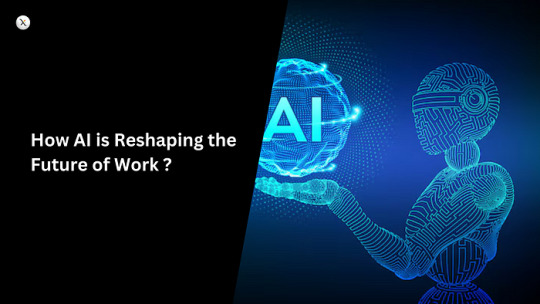
Artificial intelligence (AI) is no longer a futuristic concept; it’s rapidly transforming the way we work. From automating mundane tasks to augmenting human capabilities, AI is poised to revolutionize the workforce. But what does this mean for the future of work? Will robots steal our jobs, or will AI create new opportunities? Let’s explore the complex relationship between AI and the future of employment, and how you can prepare with the right skills.
The Rise of AI in the Workplace:
AI is already impacting various industries through:
Automation: AI-powered systems can automate repetitive tasks, improving efficiency and reducing costs.
Data Analysis: AI algorithms can analyze vast datasets to extract insights and inform decision-making.
Personalization: AI can personalize customer experiences, streamline workflows, and enhance productivity.
Augmentation: AI tools can augment human capabilities, enabling workers to perform tasks more effectively.
The Impact on Jobs:
The impact of AI on jobs is a complex issue. While some jobs will be automated, others will be transformed, and new jobs will be created.
Job Displacement: Repetitive and routine tasks are most susceptible to automation, potentially leading to job displacement in certain sectors.
Job Transformation: Many jobs will evolve as AI augments human capabilities, requiring workers to adapt and acquire new skills.
Job Creation: The development and implementation of AI technologies will create new jobs in areas such as AI development, data science, and AI ethics.
The Skills of the Future:
To thrive in the age of AI, particularly with the rise of Generative AI (GenAI), workers will need to develop new skills, including:
Technical Skills: Proficiency in AI-related technologies, such as machine learning, data analysis, and programming, especially related to GenAI models.
Critical Thinking and Problem-Solving: The ability to analyze complex situations and make sound decisions, particularly regarding the outputs of GenAI.
Creativity and Innovation: The ability to generate new ideas and solutions, leveraging GenAI as a creative tool.
Emotional Intelligence: The ability to understand and manage emotions, build relationships, and collaborate effectively, particularly in human-AI collaborative environments.
Adaptability and Lifelong Learning: The ability to adapt to change and continuously acquire new skills, to keep up with the rapid advancements in AI and GenAI.
The Importance of Reskilling and Upskilling:
To mitigate the potential negative impacts of AI, organizations and governments must invest in reskilling and upskilling programs. These programs should focus on:
**Providing training in AI-related skills, with a strong focus on GenAI applications and development.
**Promoting lifelong learning, especially regarding the ethical and practical implications of GenAI.
**Supporting workers in transitioning to new roles, that leverage GenAI to enhance productivity.
The Ethical Considerations:
As AI, and especially GenAI, becomes more prevalent in the workplace, it’s crucial to address ethical considerations, including:
Bias and Discrimination: Ensuring that AI algorithms, especially GenAI models, are fair and unbiased.
Data Privacy: Protecting worker data and ensuring responsible use of AI, including the data used to train GenAI models.
Job Displacement: Addressing the potential impact of AI on employment and providing support for displaced workers, and understanding the impact of GenAI specifically.
AI Governance: Developing frameworks for the responsible development and deployment of AI, including GenAI’s use in creative and decision-making processes.
The Human-AI Collaboration:
The future of work is not about humans versus AI; it’s about humans and AI, especially GenAI, working together. By leveraging the strengths of both, we can create a more productive, innovative, and fulfilling work environment.
Xaltius Academy’s GenAI Course: Your Key to the Future:
To prepare for this AI-driven future, consider Xaltius Academy’s GenAI course. This comprehensive program will equip you with the skills and knowledge needed to understand and leverage the power of Generative AI. You’ll learn how to build and deploy GenAI models, understand their ethical implications, and explore their diverse applications across industries. This course is your gateway to staying relevant and thriving in the evolving world of work.
Looking Ahead:
The AI revolution, with GenAI at its forefront, is underway, and its impact on the future of work will be profound. By embracing change, investing in skills development, and addressing ethical considerations, we can ensure that AI benefits everyone.
2 notes
·
View notes
Text
The Role of Workforce Productivity Insights in Shaping Future Workplaces

In the rapidly evolving business landscape, workforce productivity insight organizations face mounting pressure to boost workforce productivity while adapting to new technological advances, changing employee expectations, and shifting market demands. As companies strive to improve efficiency, the role of workforce productivity insights becomes crucial. By leveraging data-driven insights into employee performance, organizations can create smarter work environments, enhance employee satisfaction, and drive long-term success.
In this article, we will explore how workforce productivity insights are shaping future workplaces, the importance of these insights, and how workforce productivity software is playing a vital role in optimizing workforce performance.
Understanding Workforce Productivity Insights
Workforce productivity insights involve analyzing data about employee performance, time management, task completion, and engagement to uncover patterns that drive or hinder productivity. These insights offer managers and leaders a deep understanding of how effectively their teams are operating, providing them with the necessary tools to make informed decisions, allocate resources efficiently, and improve overall performance.
With the rise of data analytics and digital tools, organizations can now capture real-time data on employee activities, interactions, and work output. This information not only highlights areas of improvement but also identifies opportunities for enhancing the productivity of individual employees, teams, and the organization as a whole.
The Importance of Workforce Productivity Insights in the Modern Workplace
The future of work is heavily influenced by technology, and organizations are increasingly relying on data to drive their decisions. By harnessing workforce productivity insights, businesses can align their workforce strategies with broader organizational goals, ensuring that all efforts contribute to sustainable success. Here’s why workforce productivity insights are essential:
1. Enhanced Decision-Making
Workforce productivity insights enable managers to make data-driven decisions rather than relying on assumptions or outdated methods. By having access to accurate, real-time information, managers can identify which teams or employees are performing well and which may need additional support. This insight allows them to make more targeted decisions regarding resource allocation, task assignments, and training initiatives.
Moreover, these insights help identify trends or patterns that could indicate potential issues, such as employee disengagement or excessive workloads, allowing leaders to take corrective actions before problems escalate.
2. Improved Employee Engagement and Satisfaction
Employee engagement is one of the most significant drivers of workforce productivity. Workforce productivity insights help organizations understand what motivates employees, what challenges they face, and how their work environment impacts their performance. By analyzing this data, companies can tailor strategies that improve job satisfaction, reduce turnover, and increase engagement.
For example, if insights reveal that employees perform better when given autonomy or flexible work schedules, organizations can introduce policies that cater to these preferences. A more engaged workforce leads to higher productivity and improved overall results.
3. Increased Efficiency and Reduced Wastage
Workforce productivity insights offer organizations a clear view of how time is spent, which can be invaluable for identifying inefficiencies and minimizing wasted resources. When managers and teams have access to these insights, they can pinpoint tasks that take longer than necessary or processes that need improvement.
By optimizing workflows, eliminating redundant tasks, and automating repetitive processes, organizations can increase efficiency and improve overall productivity. This also allows employees to focus on high-value activities, leading to better performance and innovation.
The Role of Workforce Productivity Software
Workforce productivity software plays an integral role in capturing, analyzing, and utilizing productivity insights. These software solutions help organizations track performance metrics, monitor employee progress, and automate workflows. By implementing workforce productivity software, organizations can turn raw data into actionable insights that inform decision-making and drive performance.
Here are some ways workforce productivity software is contributing to shaping future workplaces:
1. Real-Time Performance Tracking
Workforce productivity software enables managers to track employee performance in real time. This means that managers can monitor how employees are spending their time and whether they are meeting set goals. These tools can measure key performance indicators (KPIs), project completion rates, and time management efficiency, allowing managers to intervene early when issues arise.
Real-time tracking also allows managers to provide instant feedback, ensuring that employees stay on track and maintain high levels of productivity. This feedback loop promotes continuous improvement and fosters a culture of accountability within teams.
2. Streamlined Collaboration and Communication
Workforce productivity software often includes communication and collaboration features that enhance teamwork, even in remote or hybrid work environments. Tools such as shared calendars, instant messaging, video conferencing, and document collaboration platforms enable teams to stay connected and aligned.
These tools not only streamline communication but also help eliminate misunderstandings, miscommunications, and delays that can hamper productivity. Effective collaboration is essential for achieving organizational goals, and workforce productivity software ensures that teams can work together seamlessly, regardless of location.
3. Automation of Repetitive Tasks
One of the primary benefits of workforce productivity software is its ability to automate routine and repetitive tasks. Whether it's scheduling meetings, sending reminders, or generating reports, automation frees up time for employees to focus on more strategic, value-adding work.
By automating administrative tasks, organizations can reduce human error, improve efficiency, and ensure that employees spend their time on activities that directly contribute to business growth. As a result, productivity increases, and employees are less likely to experience burnout from mundane, repetitive tasks.
4. Customizable Reporting and Analytics
Workforce productivity software typically includes robust reporting and analytics features, allowing managers to generate customizable reports on various aspects of employee performance. These reports provide insights into work trends, employee productivity patterns, and potential areas for improvement.
By using data to generate actionable insights, managers can develop more targeted strategies that address specific productivity challenges. Additionally, these reports help identify high-performing employees, enabling organizations to recognize and reward talent, which boosts morale and further drives productivity.
The Future of Workforce Productivity Insights
As technology continues to evolve, workforce productivity insights will play an even more critical role in shaping the workplace of the future. The increasing use of artificial intelligence (AI) and machine learning (ML) in workforce productivity software will provide even more granular insights into employee behavior, performance, and work habits. These technologies will enable organizations to predict performance trends, optimize team dynamics, and create personalized work experiences that maximize individual potential.
Moreover, as organizations embrace remote and hybrid work models, workforce productivity insights will be crucial for maintaining engagement, ensuring performance standards are met, and fostering collaboration. The future workplace will be highly data-driven, with insights enabling organizations to be more agile, adaptable, and responsive to changing conditions.
Conclusion
Workforce productivity insights are not just a luxury for modern organizations – they are a necessity. workforce productivity software As businesses navigate the complexities of the digital era, understanding how to measure, track, and improve workforce performance is critical to staying competitive. Workforce productivity software is an essential tool in this process, providing managers with the data they need to make informed decisions and optimize employee performance.
By leveraging these insights and tools, organizations can create a future workplace that fosters innovation, collaboration, and efficiency – a workplace where employees can thrive, and productivity soars.
2 notes
·
View notes